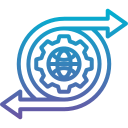The Impact of AI on Design Creativity
Artificial Intelligence is dramatically reshaping the creative landscape, especially in the field of design. With its growing capabilities, AI is not only streamlining processes but is also influencing how designers think, collaborate, and innovate. The boundaries between human imagination and machine-generated concepts are blurring, making us reconsider the very essence of creativity in design. This page explores how AI is impacting design creativity—from expanding the creative toolkit and inspiring novel design ideas to reshaping workflows and challenging traditional roles. Join us as we dive into the multifaceted relationship between artificial intelligence and the ever-evolving world of creative design.
Redefining Inspiration
Artificial intelligence can analyze vast datasets of images, styles, and trends, offering designers instant access to an expansive well of ideas. By surfacing patterns and connections humans might miss, AI can spark inspiration and encourage creative leaps that add richness and depth to the design process. These insights propel designers to explore unconventional directions, blending human intuition with machine-generated possibilities to produce truly unique results.
Streamlining the Creative Process
By automating routine and technical tasks—like image resizing, color mapping, and layout generation—AI liberates designers from time-consuming details. Freed from these constraints, creatives can devote more energy to conceptualization and iterative experimentation, resulting in faster turnarounds and more robust creative exploration. This efficiency not only accelerates project timelines but also enables a more dynamic and responsive approach to design challenges.
Facilitating Cross-Disciplinary Collaboration
AI serves as a bridge between disciplines, translating design language into technical requirements or generating prototypes that non-designers can easily interpret. This capability fosters collaboration among teams with diverse backgrounds, encouraging a broader range of perspectives and innovations. By making creative tools more accessible, AI empowers a wider array of stakeholders to participate meaningfully in the design process, enriching the final outcomes.
Previous slide
Next slide

Inspiring New Forms and Aesthetics
01
Generative Design and Novel Patterns
AI-driven systems capable of generative design can rapidly create a multitude of variations based on input criteria, such as materials, functions, or constraints. These algorithms often uncover unanticipated forms, patterns, or structures that would be difficult for even the most imaginative human designers to envision. The resulting aesthetics can be both strikingly original and optimized for performance, pushing the boundaries of tradition and inspiring a new era of bold, experimental design.
02
Breaking Cultural and Stylistic Barriers
AI platforms are adept at analyzing global design influences and fusing motifs from disparate cultural origins. By synthesizing elements from various traditions, these tools challenge conventional aesthetic categories, resulting in designs that are both fresh and globally resonant. This cross-pollination not only enriches visual languages but also reveals new opportunities for creativity by blurring stylistic boundaries that once seemed fixed.
03
Personalized Aesthetics at Scale
The ability of AI to quickly generate unique iterations means designers can now offer highly personalized works tailored to individual tastes and contexts. Whether adjusting typefaces, color palettes, or imagery, AI makes it feasible to create customized experiences on a large scale. This adaptability empowers designers to craft solutions that resonate more deeply with their audiences, demonstrating creativity not just in form, but in strategic execution.
Transforming Design Roles and Workflows
Shifting from Execution to Curation
As AI takes on more production-oriented tasks, designers are increasingly positioned as curators and decision-makers rather than solely as creators. Their expertise becomes essential in guiding, refining, and selecting from AI-generated options, ensuring that final designs align with overarching brand strategies and human values. This shift allows creative professionals to focus on orchestrating vision and narrative, elevating their roles within organizations.
Reimagining Collaboration Between Human and Machine
Today’s design process often involves a continuous dialogue between human insight and machine learning. Designers provide initial parameters, review AI outputs, and fine-tune results, creating a feedback loop that enhances both creativity and efficiency. This new partnership invites a reimagining of creative collaboration, where technology becomes an intuitive extension of the designer’s own creative process.
Evolving Skills in the Design Profession
To fully harness AI’s potential, designers are expanding their skillsets to include data literacy, algorithmic thinking, and critical analysis of machine outputs. The most successful creatives are those who blend artistic talent with technological fluency, ensuring their work remains relevant in an AI-enhanced landscape. This evolution in required expertise signifies not only a change in workflows but a transformation in the very definition of what it means to be a designer.
